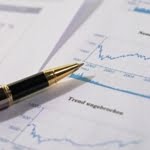
Without a doubt, we live in interesting times. Events unfold in sequences so rapid no one can truly keep up with them. For example, while everyone was gawping at Russia’s incursion into Ukraine last week, President Obama unveiled a $3.9 trillion budget proposal for fiscal year 2015.
The plan includes $56 billion in increased spending. Tax hikes for the rich and tax cuts for the poor are proposed to cover the additional costs. There’s also $50 million for preservation of bee habitat, among other things, if you’re into that sort of thing.
Still, we won’t hash out the budget proposal today. Nor will we offer the latest on Ukraine…or the Malaysia Airlines plane that mysteriously vanished on Saturday. We merely highlight these matters to juxtapose the stimulating news stories that appear on a daily basis.
Certainly, the public’s attentiveness is beyond saturation. People would rather check out with Jimmy Fallon each night – or tweak on the latest techno gadget – than contemplate eroding liberties, tax rules, and wasteful regulations. Occasionally, however, the mass occurrence of interesting times forces people to stand up and take notice…
Unfinished Business
Where the economy is concerned, we believe something very interesting is right around the corner. As we move from winter to spring, we suspect it will soon become apparent that the weather’s not what’s ailing the economy. For something much more terminal than winter weather is dragging the economy down.
The feeble economic recovery is a symptom of a fundamentally weak economy. This is something that no policy modification can fix. What’s needed to restore things to a stable footing is a financial and economic reset. Unfortunately, this means short term pain.
When financial markets and the economy cracked in 2008, the Fed and the Treasury stepped in with trillions of dollars of monetary and fiscal stimulus. While this helped cushion the fall, it also prevented the economy and financial system from becoming structurally sound. Thanks to all the funny money and financial props the correction wasn’t able to complete itself. There’s still plenty of unfinished business.
Instead, the stimulus and monetary shenanigans distorted the financial system and the economy. Asset prices jumped yet real economic growth lagged. In short, interest rates were artificially suppressed, stocks soared to new heights, and practically all financial asset prices were floated up on a bubble of printed money. This gave the appearance of prosperity and recovery.
The actual economy, however, lurched forward like a sick indigent. The creation of new jobs was more lackluster than a Beatles cover band. On top of that, wage growth stagnated.
Where the Stock Market Must Go
The next time the stock market falls, it’ll become profoundly obvious that there hasn’t been much of a recovery at all. Regrettably, while the stock market’s continued to hit new highs, we believe a significant reversal will occur later this year. Weakening economic data is just the precursor to the fall.
Just the subtle tapering back of 5-years of radical monetary policy is going to wreak havoc on the stock market. If you recall, it was the Fed’s raising of the federal funds rate that ultimately cracked the stock market in both 2000 and 2007. It’s no coincidence that about this same time, the economy cracked too.
These days, financial markets have been larded over with monetary policies that had never been seriously contemplated prior to 2008…let alone put into practice. Now it’s not even an exit from zero interest rate policy (ZIRP) that’s the going concern. It’s merely the reduction in the rate of money supply expansion that’s putting things on edge.
Irrespective, stocks must eventually go down because they’ve been going up, nearly without interruption, for 5-years. It’s no secret that, sooner or later, stocks that are expensive will become cheaper. Similarly, stocks that are cheap will, at some point, become more expensive.
This notion isn’t any more debatable than the seasons of the year. Naturally, the exact day or time that the stock market will turn is unknown. But that the moment is approaching is without question.
Will the S&P 500 hit 2,000 before the market reverses? Again, this is the sort of thing for the gods to decide. We do know, however, that if the S&P 500 does run up to 2,000, the ultimate correction will be equally impressive.
Sincerely,
MN Gordon
for Economic Prism
Return from Where the Stock Market Must Go to Economic Prism




